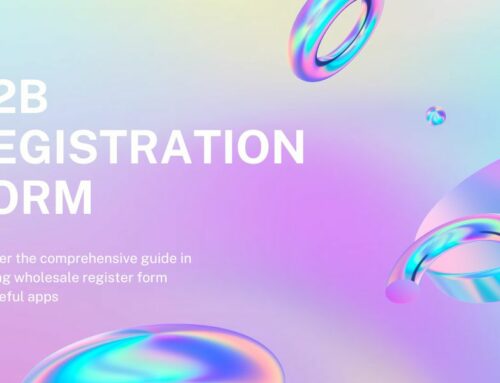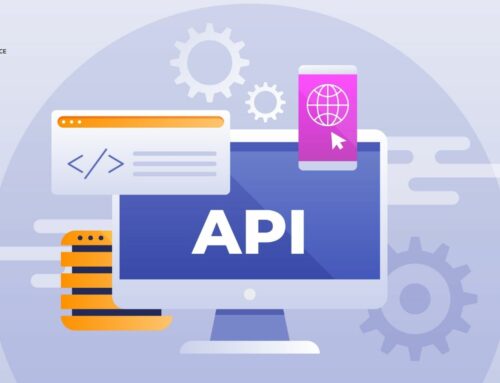As a B2B eCommerce solution provider, your business revolves around more than just selling your services. You need to uphold an intricate web of supplier management, payment processing, and pricing negotiations. With eCommerce metrics, you can get an accurate indicator of how far you are from reaching your business’s KPIs.
But what do we mean by KPIs?
Key Performance Indicators are trackable metrics used by organizations to measure their performance across their operations. By using data, they can assess how far they are from reaching specific goals and targets.
Let’s take a look at the nine B2B eCommerce metrics you should be using to assess your overall performance.
Contents
Discover 9 B2B eCommerce Metrics and KPIs to Track
#1. Customer Retention Rate

Customer retention rate (CRR) is a crucial indicator of the success of your B2B ecommerce business. It shows how many customers continue to make purchases from your online store. If your CRR is declining, it could indicate potential issues with your ecommerce platform’s ability to satisfy and retain customers.
Retaining existing customers is often more cost-effective than acquiring new ones, which makes tracking CRR essential for your business to build a loyal customer base. Keeping customers coming back gives you a financial advantage rather than constantly seeking out new customers.
Actionable insights: If your CRR is low, you may have issues with your customer services. Using AI in customer service can help your business provide quick and accurate responses to customer queries to reduce your response time and better satisfy B2B customers.
#2. Customer Acquisition Cost
The customer acquisition cost (CAC) measures the expenses of acquiring new customers. It’s calculated by dividing the amount spent on customer acquisition by the number of new customers acquired in a specific period.
CAC is a significant metric as it evaluates the effectiveness of marketing campaigns and budget allocation.
Actionable insights: Implementing targeted content marketing strategies can help reduce CAC, resulting in a larger customer base. Once you’re bringing more B2B customers to your business website, you can use an AI conversational platform to engage with visitors and find potential leads.
#3. Order Frequency

Order frequency measures how frequently a customer makes purchases within a year. This metric plays an essential role in retaining customers and promoting cross-selling of complementary products. Increasing order frequency enhances customer loyalty and lifetime value.
Actionable Insights: By using order frequency to group customers into categories like frequent buyers, occasional buyers, and one-time buyers, you can tailor marketing strategies to suit your customer base.
For instance, you could give your frequent B2B customers access to a B2B loyalty program or discounts. This sales engagement strategy will allow you to produce even more orders from your loyal customers.
#4. Average Order Value (AOV)
This metric determines the average amount spent per order. A rising average order value (AOV) indicates a strong remarketing strategy and a wide range of products, while a decrease may suggest that customers are not satisfied. To boost AOV, you can consider tactics such as bundling products together or offering discounts for minimum spending.
The percentage of return visits is an important indicator of how user-friendly and engaging your ecommerce website is. If the percentage is healthy or increasing, it suggests that users have a positive experience. Factors that influence return visits include navigation, security, and the ordering process.
Actionable insights: Having a well-designed website with easy navigation and robust security measures builds customer trust and encourages them to come back. As you design your website, include SEO strategies to bring more potential customers to your site.
#5. Conversion Rate

Conversion rate is a crucial metric in ecommerce as it measures the percentage of site visits that result in a purchase. While the average conversion rate in the US is around 2.58%, B2B businesses can improve their rates by optimizing their websites, understanding customer needs, and using persuasive Calls to Action (CTAs). By ensuring fast website loading times, clearly communicating benefits like free shipping, and using compelling CTAs, businesses can increase their conversion rates.
In addition to customer-centric B2B eCommerce metrics, B2B ecommerce businesses should also consider internal benchmarks to ensure operational efficiency. These benchmarks include evaluating labor costs for logistics, warehousing, and construction work as they provide insights into operational efficiency.
Actionable Insights: If you have a low conversion rate, you should evaluate the speed of your business website. Using high-value domains ensures your carefully thought-out content is quickly visible to your B2B customer.
Use BSS: B2B & Wholesale Solution to boost your conversion rate with quantity breaks, custom pricing, B2B registration forms, B2B tax and more.
#6. Shopping Cart Abandonment Rate
The rate at which customers abandon their shopping carts is a common challenge in the world of online retail. It happens when a potential B2B customer goes through the trouble of selecting products and adding them to their virtual cart but ultimately fails to complete the purchase.
The shopping cart abandonment rate refers to the percentage of visitors who abandon their carts compared to the total number of visitors who started the checkout process.
Your shopping cart abandonment rate may be high for several reasons. As a B2B ecommerce business, your customers will likely need to go through many decision-makers and finish an approval process before they can buy your products and services, leading to abandoned carts.
Ecommerce B2B transactions are also typically high-value purchases. Buyers may hesitate or require additional approvals for significant expenditures, leading to abandoned carts.
Actionable Insights: If you have a high shopping cart abandonment rate, try prompting users to provide feedback through email follow-ups. If technical difficulties are an issue, use remote support software to allow your support team to address any issues efficiently.
Add BSS B2B Portal App to quick order, and net terms for your store.
#7. Customer Lifetime Value (CLV)

Customer Lifetime Value (CLV) is one of valuable B2B eCommerce metrics that will help your business estimate the total revenue you can expect from a customer throughout the entire relationship. It takes into account the average value of purchases, how frequently customers make purchases, and the average duration of their relationship with the business.
With CLV, you can identify high-value customers and segment your customer base for more targeted marketing and sales efforts. Your high-CLV customers could receive personalized offers, while your lower-CLV customers may receive more cost-effective marketing.
Actionable Insights: A low CLV can be caused by consistently negative experiences with your B2B business. Poor customer service, low product quality, or a complicated website will all directly impact your customer’s perception of you. Check your call center agent efficiency and ensure your B2B business is readily available to answer any customer questions.
#8. Inventory Turnover
Inventory turnover measures how efficiently a business sells its inventory within a specified timeframe, usually over a year. To work out your turnover, you need to divide the cost of goods sold by the average value of inventory you hold during the year.
A high turnover rate indicates that you’re effectively managing your inventory, while a low rate suggests there are potential issues with your strategy, like excessive stock levels or slow-selling products.
Actionable Insights: By regularly monitoring your inventory turnover, you can examine past trends to create far more accurate forecasts for the future. This allows you to adjust the way you manage your inventory and adjust stock levels to ensure you don’t run out of product or face a stock out.
#9. Lead-to-Customer Conversion Rate

Lead-to-customer conversion rate measures the effectiveness of your lead generation and sales strategies by tracking the percentage of your B2B leads that convert into paying customers.
Leads are potential customers who show interest in your products or services but haven’t bought anything yet. These leads typically come from inquiries, contact form submissions, email sign-ups, or other interactions with your B2B ecommerce business.
It’s likely your business already uses lead generation strategies like content and email marketing, paid advertising, and SEO. Lead-to-customer conversion rates allow you to see the effectiveness of your campaign so you can improve how you reach out to potential leads.
Actionable Insights: Measure the change in lead-to-conversion rate after every new conversion strategy you implement to assess what you’re doing well and how you can improve your interactions with potential business customers.
Boost Your B2B Ecommerce Performance With Metric Tracking
In the realm of B2B eCommerce metrics, understanding which metrics to keep an eye on can make all the difference in your business progression. Key performance indicators (KPIs) that focus on customers offer valuable insights into the overall health of your B2B business and how satisfied your business customers are.
By regularly monitoring these metrics, your B2B e-commerce business can make well-informed decisions that enhance your customer experiences and achieve sustainable success in a highly competitive market.




